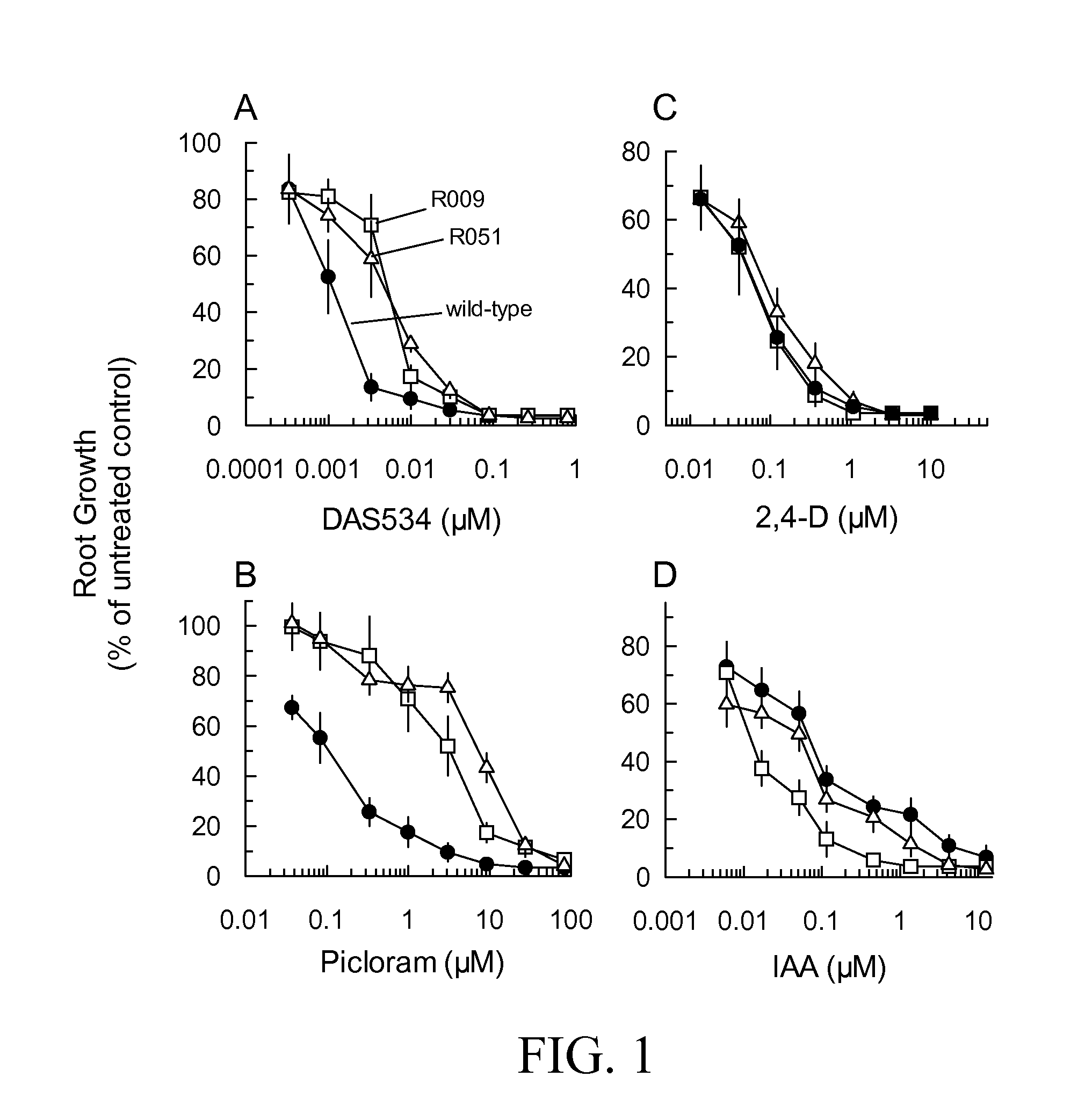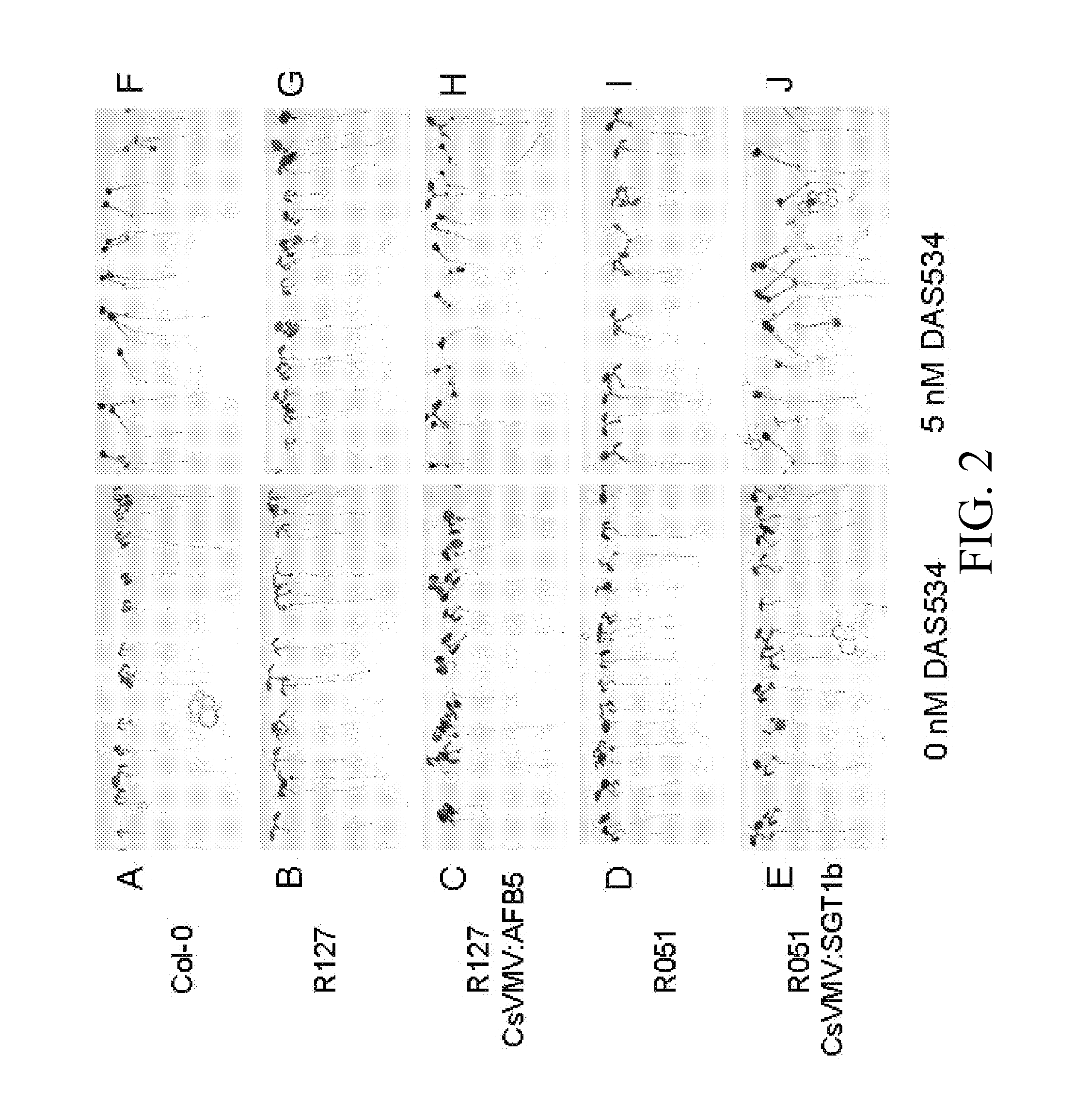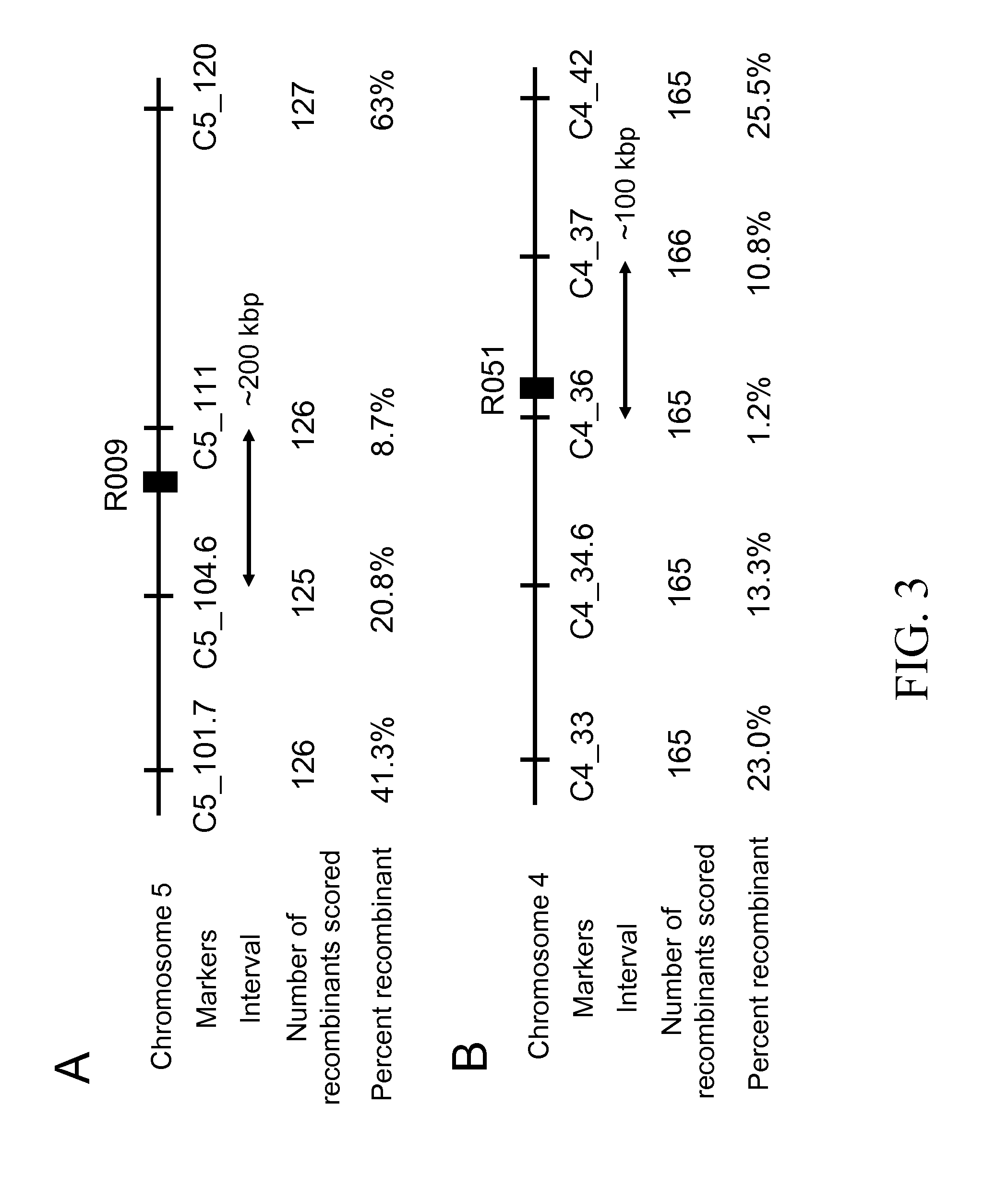Resistance to auxinic herbicides
a technology of auxinic herbicides and resistance, applied in the field of plant biology, can solve the problems of resistance development, toxicological side effects, and difficulty in detecting resistance, and achieve the effect of increasing the hypocotyl elongation and increasing the respons
- Summary
- Abstract
- Description
- Claims
- Application Information
AI Technical Summary
Benefits of technology
Problems solved by technology
Method used
Image
Examples
example 1
Identification and Genetic Characterization of Mutants Resistant to DAS534
[0130] To identify mutants resistant to picolinate auxins, EMS-mutagenized M2 seedlings were screened for resistance to DAS534, a 6-phenylpicolinate auxin (Compound 173 in WO 03 / 011853A1). The seedlings were grown on agarose medium containing 10 nM DAS534. This concentration was sufficient to produce marked auxinic effects on the seedlings including significant inhibition (60%) of root growth. From a total of 780,100 EMS M2 seedlings, 125 putative resistant mutants were identified by visual inspection. Seeds were recovered from 33 of these plants. Selection of lines for further study was based on the strength of resistance, elimination of potential siblings and the health and fertility of adult plants. To avoid recovering alleles of previously characterized mutants, we preferentially selected lines that showed low or no cross resistance to 0.045 μM 2,4-D. Seven lines resistant to DAS534 had negligible resista...
example 2
Chemical Selectivity of Picolinate Auxin Resistant Mutants
[0132] The dose responses of root growth of the mutant lines treated with a variety of auxins were measured to define the level and chemical spectrum of resistance in detail. Mutant lines from complementation Groups 1 and 2 had 6 to 8-fold resistance to DAS534 (FIG. 1A). No significant differences in resistance between lines within each complementation group were noted (data not shown). The mutants were very cross-resistant to the picolinate auxin herbicide picloram (FIG. 1B) showing 26 to 60-fold increases in GR50 over that of wild type. Group 2 mutants were slightly more resistant than Group 1 lines. In contrast to the response to DAS534 and picloram, the lines from both complementation groups showed negligible resistance to 2,4-D (FIG. 1C) and a slight increase in sensitivity to IAA (FIG. 1D). The fold resistance levels of the mutants are summarized in Table 1.
[0133] Wild-type, Group 1 and Group2 seedlings growing on 5 n...
example 3
Mapping and Identification of DAS534-Resistance Mutations
[0136] To identify the genes involved in this chemical selectivity, one mutation from each complementation group (R009 from Group 1 and R051 from Group 2) was genetically mapped. To generate the mapping population, a homozygous mutant M3 line (from the Col-0 accession) was crossed with a wild-type plant of the Ler accession and the resulting F1 plants were allowed to self-fertilize and produce F2 seed. The F2 seed were germinated on solid medium containing a sublethal concentration of DAS534. Plants resistant to the herbicide were removed from the herbicide-containing medium and allowed to recover on solid medium lacking the herbicide for seven days and then transplanted to soil. When the plants were at the rosette stage, a single leaf was removed and genomic DNA was isolated and used in mapping experiments with molecular genetic markers.
[0137] The mutation in R009 was mapped to a 200 kb interval around 105 cM on chromosome ...
PUM
| Property | Measurement | Unit |
|---|---|---|
| root lengths | aaaaa | aaaaa |
| root lengths | aaaaa | aaaaa |
| root lengths | aaaaa | aaaaa |
Abstract
Description
Claims
Application Information
 Login to View More
Login to View More - R&D
- Intellectual Property
- Life Sciences
- Materials
- Tech Scout
- Unparalleled Data Quality
- Higher Quality Content
- 60% Fewer Hallucinations
Browse by: Latest US Patents, China's latest patents, Technical Efficacy Thesaurus, Application Domain, Technology Topic, Popular Technical Reports.
© 2025 PatSnap. All rights reserved.Legal|Privacy policy|Modern Slavery Act Transparency Statement|Sitemap|About US| Contact US: help@patsnap.com



